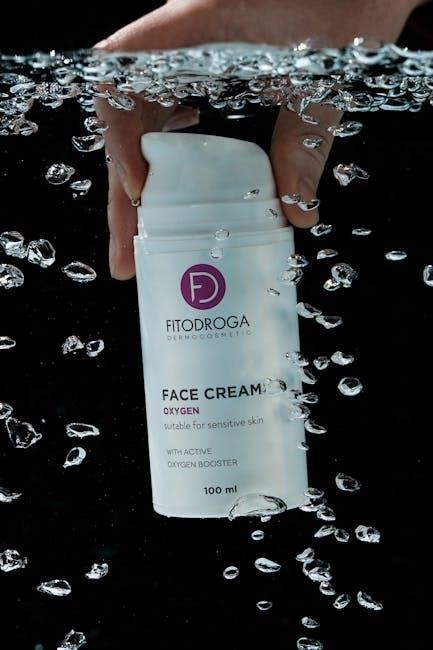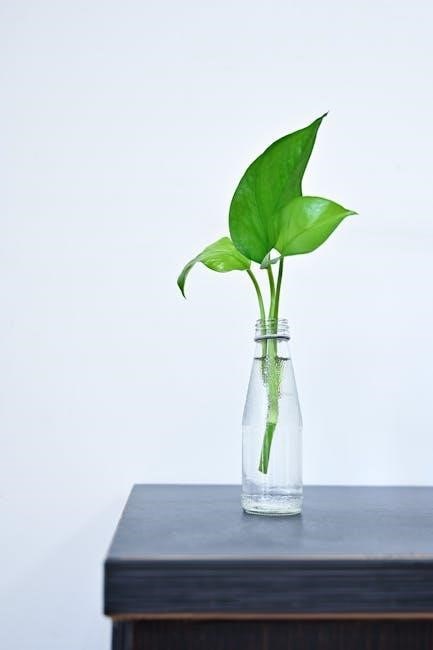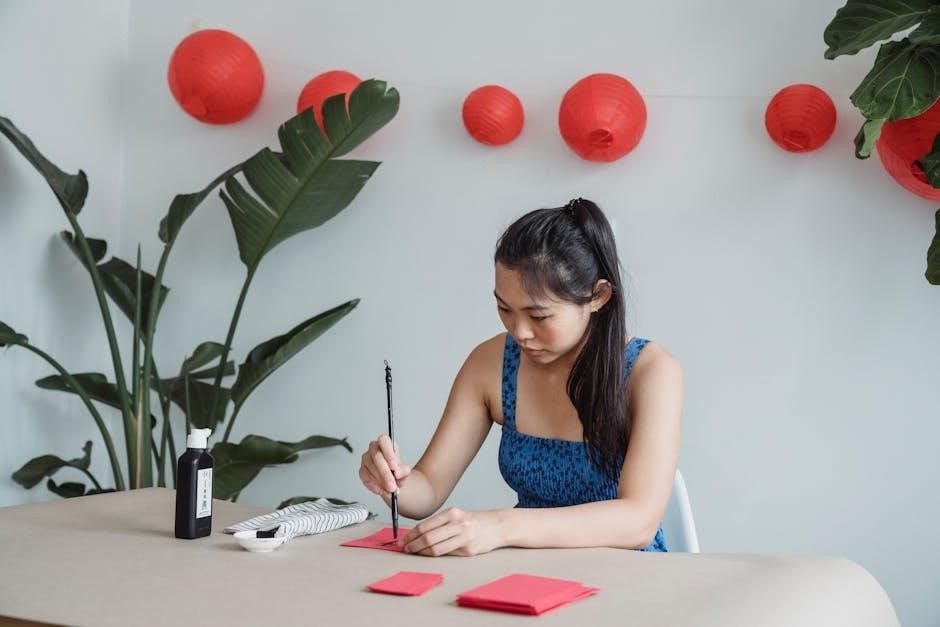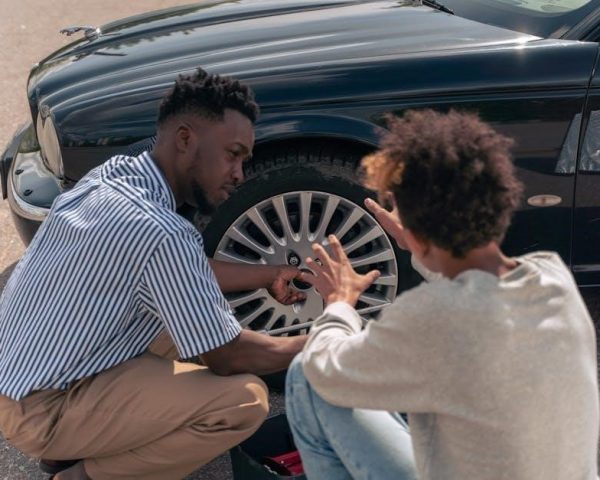A humidifier bottle enhances oxygen therapy by adding moisture to dry oxygen, improving comfort and effectiveness. It connects to an oxygen concentrator, providing humidified air for easier breathing.
What is a Humidifier Bottle?
A humidifier bottle is a device used with oxygen concentrators to add moisture to the oxygen being delivered. It is typically a plastic container filled with distilled water, designed to be placed in the oxygen pathway. As oxygen flows through the bottle, it picks up moisture from the water, humidifying the gas before it reaches the user. This helps prevent dryness in the nasal passages and throat, making oxygen therapy more comfortable. The bottle is usually attached directly to the concentrator or connected via tubing, ensuring a consistent flow of humidified oxygen. While simple in design, it plays a crucial role in enhancing the effectiveness of oxygen therapy by providing the necessary hydration to the air being breathed.

Why Use a Humidifier with an Oxygen Concentrator?
Using a humidifier with an oxygen concentrator is essential to add moisture to the dry oxygen, preventing nasal and throat irritation. Oxygen concentrators produce pure oxygen, which lacks natural humidity, leading to discomfort during extended use. A humidifier bottle helps alleviate dryness, reducing the risk of bloody noses and throat soreness. It enhances oxygen absorption by providing moist air, which is easier for the body to process. This improves the overall comfort and effectiveness of oxygen therapy. Additionally, humidification is particularly beneficial for users requiring high flow rates or those living in dry climates, as it helps maintain respiratory health and prevents complications associated with dry air. Regular use ensures a more comfortable and effective oxygen therapy experience.

Key Components of a Humidifier Bottle System
The system includes a humidifier bottle, oxygen concentrator, and connecting tubing. The bottle holds distilled water, while the concentrator delivers oxygen, and tubing connects the components securely.
Oxygen Concentrator Overview
An oxygen concentrator is a medical device that extracts oxygen from ambient air, removing nitrogen and delivering concentrated oxygen to patients. Available in home and portable models, they offer adjustable flow rates to meet individual needs. Key features include alarms for low oxygen levels or high pressure and filters to ensure clean air output. Some concentrators are compatible with humidifier bottles, which add moisture to the oxygen, reducing airway dryness. While some models include built-in humidifiers, others require external attachments. Regular maintenance, like cleaning filters and the humidifier bottle, is essential to prevent bacterial growth and ensure optimal performance. Proper placement, at least one foot away from walls, is recommended for efficient operation. For higher flow rates, a humidifier is often prescribed to enhance comfort during oxygen therapy.
Humidifier Bottle Design and Features
A humidifier bottle is designed to add moisture to oxygen delivered by a concentrator, reducing dryness in the nasal passages and airways. Typically made of durable, BPA-free plastic, these bottles are lightweight and easy to handle. They feature a wide opening for easy filling and a secure cap to prevent spills. Some models include built-in tubing connectors or adapters for seamless attachment to the oxygen concentrator. The bottle’s design often includes a clear water level indicator, ensuring proper filling without overfilling. Many humidifier bottles are universal, compatible with various concentrator brands and models. Optional features may include anti-bacterial filters or ergonomic grips for portability. The design ensures consistent humidification, enhancing oxygen therapy comfort and effectiveness.
Oxygen Tubing and Connectors
Oxygen tubing and connectors are essential for delivering humidified oxygen from the concentrator to the user. Standard tubing lengths range from 7 to 25 feet, ensuring flexibility and comfort. Connectors are designed to securely attach the tubing to both the humidifier bottle and the concentrator, preventing leaks. These components are typically made of durable, medical-grade materials to ensure safety and longevity. Universal connectors are compatible with most oxygen concentrators, making them versatile for different models. Properly securing the tubing and connectors is crucial to maintain consistent oxygen flow; Regularly inspecting the tubing for kinks, cracks, or blockages ensures optimal performance. Always follow manufacturer guidelines for replacing worn-out tubing or connectors to maintain therapy effectiveness.

Setup and Installation Instructions
Setting up a humidifier bottle involves filling it with distilled water, attaching it to the oxygen concentrator’s outlet, and connecting the oxygen tubing securely. Ensure all connections are tight to prevent leaks and maintain proper oxygen flow for effective therapy.
Filling the Humidifier Bottle with Distilled Water
Filling the humidifier bottle with distilled water is a crucial step to ensure proper humidification. Always use distilled water to prevent mineral buildup and bacterial growth. Locate the fill line on the bottle and pour water up to this mark, avoiding overfilling. Replace the cap securely to prevent spills. Never use tap water, as it contains minerals that can clog the system. After filling, attach the bottle to the concentrator and ensure it is upright. Properly filled and maintained, the humidifier bottle will effectively add moisture to the oxygen, enhancing comfort during therapy. Regularly check the water level and refill as needed.
Attaching the Humidifier Bottle to the Oxygen Concentrator
Attaching the humidifier bottle to the oxygen concentrator ensures proper humidification of the oxygen flow. Locate the oxygen outlet port on the concentrator, typically marked or color-coded. Remove any protective caps and align the bottle’s connector with the port. Gently screw the bottle onto the port in a clockwise direction until it is securely fastened. Ensure a tight seal to prevent air leaks. Once attached, connect the oxygen tubing to the bottle’s outlet. Double-check all connections for stability and leaks. Proper attachment ensures efficient delivery of humidified oxygen, enhancing therapy comfort and effectiveness. Follow the manufacturer’s guidelines for specific models to avoid improper installation.
Connecting the Oxygen Tubing
Connect the oxygen tubing to the humidifier bottle securely. Take one end of the tubing and attach it to the outlet port of the humidifier bottle, ensuring a snug fit. Next, connect the other end of the tubing to the nasal cannula or oxygen mask. Gently tug on the tubing to confirm it is properly secured to both the bottle and the delivery device. Ensure there are no kinks or blockages in the tubing, as this could restrict oxygen flow. Regularly inspect the tubing for signs of wear or damage and replace it as needed. Properly connected tubing ensures consistent oxygen delivery and effective humidification during therapy. Always follow the manufacturer’s guidelines for tubing compatibility and replacement schedules.
Securing the Humidifier Bottle
Properly securing the humidifier bottle ensures stability and prevents accidental tipping. Attach the bottle to the oxygen concentrator using the provided straps, brackets, or adapters. Position the bottle on a flat, stable surface if not directly mounted on the concentrator. Ensure the bottle is upright and level to maintain consistent water flow. If using a stand or cart, secure the bottle tightly to avoid movement during operation. Regularly inspect the connections and straps for wear or damage. Keeping the humidifier bottle stable and upright prevents water leakage and ensures optimal humidification. Always follow the manufacturer’s guidelines for securing the bottle to your specific oxygen concentrator model. Proper securing enhances safety and effectiveness during oxygen therapy.

Using the Humidifier Bottle
Turn on the oxygen concentrator and adjust the flow rate as prescribed. Monitor the water level in the humidifier bottle to ensure proper humidification during use; Always follow the manufacturer’s guidelines for operation and maintenance to optimize performance and safety.
Turning On the Oxygen Concentrator
Before turning on the oxygen concentrator, ensure the humidifier bottle is properly attached and filled with distilled water. Plug in the device, turn it on, and allow it to warm up. Check that all connections, including the oxygen tubing, are secure. Once operational, verify the oxygen flow through the tubing and humidifier bottle. Adjust the flow rate as prescribed by your healthcare provider. Monitor the device for any unusual sounds or issues. Always follow the manufacturer’s instructions for startup and operation to ensure safe and effective oxygen delivery. Maintain a safe distance from flammable materials and avoid moving the concentrator while it is in use.
Adjusting the Oxygen Flow Rate
Once the oxygen concentrator is turned on, adjust the flow rate according to your prescription. Locate the flow meter or dial on the concentrator and slowly turn it to the recommended setting. Ensure the flow rate matches your healthcare provider’s instructions. If using a humidifier bottle, higher flow rates may require additional moisture to prevent dryness. Monitor the oxygen output by checking the flow meter or listening for a steady, consistent flow. Avoid setting the flow rate too high or too low, as this can affect therapy effectiveness. Always refer to your device’s user manual for specific guidance on adjusting the flow rate safely and accurately.
Monitoring the Humidifier Bottle Water Level
Regularly check the water level in the humidifier bottle to ensure optimal humidification. The water level should never exceed the maximum fill line to prevent overflow. If the water level drops too low, the humidifier may not function effectively, leading to dry oxygen. Refill the bottle with distilled water as needed, ensuring not to overfill. Always turn off the oxygen concentrator before refilling to avoid any potential leaks or water ingress. Replace the cap securely after refilling. Monitoring the water level helps maintain consistent humidification and prevents interruptions in your oxygen therapy. Check the water level daily or as recommended in your device’s user manual to ensure smooth operation.

Maintenance and Care
Regularly clean and replace the humidifier bottle to prevent bacterial growth. Use distilled water and ensure proper handling to maintain hygiene and functionality of the system.
Cleaning the Humidifier Bottle
Regular cleaning of the humidifier bottle is essential to prevent bacterial growth and maintain hygiene. Start by rinsing the bottle with distilled water. Next, mix equal parts water and white vinegar, and soak the bottle for 30 minutes. Use a soft brush to scrub away any mineral deposits or residue. Rinse thoroughly to remove any vinegar taste or smell. Allow the bottle to air dry before refilling. For deeper disinfection, soak the bottle in a mixture of water and hydrogen peroxide. Always follow the manufacturer’s guidelines for cleaning and replacing the bottle to ensure optimal performance and patient safety.
Replacing the Humidifier Bottle
Replacing the humidifier bottle is crucial for maintaining effective oxygen therapy and hygiene. Start by turning off and unplugging the oxygen concentrator. Disconnect the tubing from the bottle and carefully remove it from the machine. Dispose of the old bottle responsibly. Take the new bottle and ensure it is compatible with your concentrator model. Fill it with distilled water to the recommended level, avoiding overfilling. Attach the new bottle securely to the concentrator’s outlet port, ensuring a tight seal. Reconnect the oxygen tubing and turn on the device. Check for any leaks by listening for hissing sounds or observing water droplets. Regular replacement, typically every 6-12 months or as indicated by the manufacturer, ensures optimal performance and prevents bacterial contamination. Always refer to the user manual for specific replacement intervals and guidelines tailored to your device. Proper replacement helps maintain the integrity of your oxygen therapy system, ensuring consistent delivery of humidified oxygen for comfort and health. If unsure, consult a healthcare professional or supplier for assistance. Maintaining a clean and functional humidifier bottle is essential for effective treatment and patient safety.
Checking for Leaks
Regularly checking for leaks in the humidifier bottle system is essential for ensuring safe and effective oxygen therapy. Start by turning off the oxygen concentrator and unplugging it from the power source. Inspect all connections, including the tubing, adapters, and bottle ports, for visible cracks or damage. Apply a soapy solution to the connections and look for bubbles, which indicate leaks. If a leak is detected, tighten the connections securely or replace the faulty part. Always refer to the manufacturer’s guidelines for specific instructions. Leak checks should be performed monthly or whenever new components are added. Proper maintenance ensures reliable oxygen delivery and prevents potential safety hazards, such as reduced oxygen flow or moisture loss. Regular inspections help maintain the integrity of the system and protect the patient’s health. If unsure, consult a healthcare professional or equipment supplier for assistance. Timely repairs can prevent complications and ensure continuous, effective therapy.
Troubleshooting Common Issues
Identify symptoms like low flow, leaks, or no humidification. Check connections, water levels, and cleanliness. Ensure proper setup and maintenance to resolve issues promptly for optimal performance. Always refer to the user manual for specific solutions and guidance. Regular checks can prevent many problems, ensuring smooth operation and effective therapy delivery. If issues persist, consult a professional for assistance. Proper troubleshooting ensures safety, comfort, and efficiency in oxygen therapy. Always prioritize patient well-being and equipment reliability. Timely resolutions minimize disruptions and maintain consistent treatment. If unsure, seek expert advice to address concerns effectively. This approach ensures the system functions correctly and safely at all times. Always follow manufacturer recommendations for repairs and adjustments to avoid further complications. Proper care extends the lifespan of the equipment while maintaining therapeutic benefits. Regular monitoring and proactive maintenance are key to preventing issues before they arise. By addressing problems early, users can ensure uninterrupted and effective oxygen therapy. This systematic approach guarantees both safety and efficacy for patients relying on oxygen concentrators. Always keep essential supplies on hand for quick fixes, such as replacement parts or distilled water. Familiarize yourself with common issues to address them confidently and efficiently. This knowledge empowers users to take control of their therapy and maintain their equipment properly. Troubleshooting is a critical skill for anyone using an oxygen concentrator with a humidifier bottle. Stay informed and prepared to handle any situation that may arise during use. This proactive mindset ensures continuous, reliable operation of the humidifier bottle system. Always prioritize safety and effectiveness when addressing any issue related to oxygen therapy equipment. Proper troubleshooting techniques are essential for maintaining optimal performance and patient comfort. By understanding and addressing common problems, users can enjoy uninterrupted and beneficial therapy. This comprehensive approach to troubleshooting ensures the humidifier bottle system functions as intended, delivering humidified oxygen safely and efficiently. Always remain vigilant and proactive in maintaining and repairing your equipment to uphold its performance and reliability. This dedication to proper care and troubleshooting is vital for anyone relying on oxygen therapy for their health and well-being. By following these guidelines, users can effectively manage and resolve common issues, ensuring their therapy remains uninterrupted and effective. This thorough approach to troubleshooting is indispensable for maintaining the integrity and functionality of the humidifier bottle system. Always adhere to recommended practices and seek professional help when needed to guarantee optimal results. This ensures the equipment operates safely, delivering the necessary oxygen therapy without complications. Proper troubleshooting and maintenance are essential for extending the life of the humidifier bottle and ensuring it continues to meet the patient’s needs. By staying informed and proactive, users can address issues confidently, maintaining the effectiveness of their oxygen therapy. This comprehensive understanding of troubleshooting is a valuable tool for anyone using a humidifier bottle with an oxygen concentrator. Always prioritize thorough checks and timely repairs to uphold the quality and safety of the therapy. This meticulous approach ensures the humidifier bottle system remains in excellent working condition, providing consistent and reliable performance. Regular troubleshooting and maintenance are crucial for preventing unexpected issues and ensuring uninterrupted therapy. By addressing potential problems early, users can maintain the effectiveness of their oxygen treatment. This proactive strategy is essential for anyone dependent on oxygen therapy, ensuring their equipment functions optimally at all times. Always be prepared to identify and resolve common issues quickly, safeguarding the patient’s health and comfort. This systematic approach to troubleshooting is vital for maintaining the integrity and performance of the humidifier bottle system. By understanding and addressing common problems, users can ensure their therapy remains effective and uninterrupted. This comprehensive guide to troubleshooting provides the necessary tools and knowledge to manage and resolve issues efficiently. Always rely on these strategies to maintain the reliability and safety of your oxygen therapy equipment. Proper troubleshooting techniques are essential for ensuring the humidifier bottle system operates as intended, delivering humidified oxygen safely and effectively. By staying informed and proactive, users can address common issues with confidence, maintaining the quality of their therapy. This dedicated approach to equipment care and troubleshooting is indispensable for anyone using an oxygen concentrator with a humidifier bottle. Always prioritize regular checks and timely repairs to uphold the performance and safety of the system. This ensures the humidifier bottle continues to function optimally, providing the necessary benefits for the patient’s respiratory health. By following these guidelines, users can effectively manage and resolve common issues, ensuring their therapy remains uninterrupted and effective. This thorough approach to troubleshooting is a valuable resource for maintaining the integrity and functionality of the humidifier bottle system. Always adhere to recommended practices and seek professional assistance when needed to guarantee optimal results. This ensures the equipment operates safely, delivering the required oxygen therapy without complications. Proper troubleshooting and maintenance are essential for extending the life of the humidifier bottle and ensuring it continues to meet the patient’s needs. By staying informed and proactive, users can address issues confidently, maintaining the effectiveness of their oxygen therapy. This comprehensive understanding of troubleshooting is a valuable tool for anyone using a humidifier bottle with an oxygen concentrator. Always prioritize thorough checks and timely repairs to uphold the quality and safety of the therapy. This meticulous approach ensures the humidifier bottle system remains in excellent working condition, providing consistent and reliable performance. Regular troubleshooting and maintenance are crucial for preventing unexpected issues and ensuring uninterrupted therapy. By addressing potential problems early, users can maintain the effectiveness of their oxygen treatment. This proactive strategy is essential for anyone dependent on oxygen therapy, ensuring their equipment functions optimally at all times. Always be prepared to identify and resolve common issues quickly, safeguarding the patient’s health and comfort. This systematic approach to troubleshooting is vital for maintaining the integrity and performance of the humidifier bottle system. By understanding and addressing common problems, users can ensure their therapy remains effective and uninterrupted. This comprehensive guide to troubleshooting provides the necessary tools and knowledge to manage and resolve issues efficiently. Always rely on these strategies to maintain the reliability and safety of your oxygen therapy equipment. Proper troubleshooting techniques are essential for ensuring the humidifier bottle system operates as intended, delivering humidified oxygen safely and effectively. By staying informed and proactive, users can address common issues with confidence, maintaining the quality of their therapy. This dedicated approach to equipment care and troubleshooting is indispensable for anyone using an oxygen concentrator with a humidifier bottle. Always prioritize regular checks and timely repairs to uphold the performance and safety of the system. This ensures the humidifier bottle continues to function optimally, providing the necessary benefits for the patient’s respiratory health. By following these guidelines, users can effectively manage and resolve common issues, ensuring their therapy remains uninterrupted and effective. This thorough approach to troubleshooting is a valuable resource for maintaining the integrity and functionality of the humidifier bottle system; Always adhere to recommended practices and seek professional assistance when needed to guarantee optimal results. This ensures the equipment operates safely, delivering the required oxygen therapy without complications. Proper troubleshooting and maintenance are essential for extending the life of the humidifier bottle and ensuring it continues to meet the patient’s needs. By staying informed and proactive, users can address issues confidently, maintaining the effectiveness of their oxygen therapy. This comprehensive understanding of troubleshooting is a valuable tool for anyone using a humidifier bottle with an oxygen concentrator. Always prioritize thorough checks and timely repairs to uphold the quality and safety of the therapy. This meticulous approach ensures the humidifier bottle system remains in excellent working condition, providing consistent and reliable performance. Regular troubleshooting and maintenance are crucial for preventing unexpected issues and ensuring uninterrupted therapy. By addressing potential problems early, users can maintain the effectiveness of their oxygen treatment. This proactive strategy is essential for anyone dependent on oxygen therapy, ensuring their equipment functions optimally at all times. Always be prepared to identify and resolve common issues quickly, safeguarding the patient’s health and comfort. This systematic approach to troubleshooting is vital for maintaining the integrity and performance of the humidifier bottle system. By understanding and addressing common problems, users can ensure their therapy remains effective and uninterrupted. This comprehensive guide to troubleshooting provides the necessary tools and knowledge to manage and resolve issues efficiently. Always rely on these strategies to maintain the reliability and safety of your oxygen therapy equipment. Proper troubleshooting techniques are essential for ensuring the humidifier bottle system operates as intended, delivering humidified oxygen safely and effectively. By staying informed and proactive, users can address common issues with confidence, maintaining the quality of their therapy. This dedicated approach to equipment care and troubleshooting is indispensable for anyone using an oxygen concentrator with a humidifier bottle. Always prioritize regular checks and timely repairs to uphold the performance and safety of the system. This ensures the humidifier bottle continues to function optimally, providing the necessary benefits for the patient’s respiratory health. By following these guidelines, users can effectively manage and resolve common issues, ensuring their therapy remains uninterrupted and effective. This thorough approach to troubleshooting is a valuable
Low Oxygen Flow
Low oxygen flow can occur due to kinked or blocked tubing, an empty humidifier bottle, or improper connections. Check the tubing for bends or kinks and straighten it if necessary. Ensure the humidifier bottle is filled with distilled water to the recommended level. Verify that all connections between the concentrator, humidifier, and tubing are secure. If the issue persists, inspect the oxygen concentrator’s filter and ensure it is clean or replaced as needed. Consult the user manual for specific guidance, and if unresolved, contact a healthcare professional or equipment supplier for assistance. Proper troubleshooting ensures consistent oxygen delivery for effective therapy.
Water Leakage
Water leakage from the humidifier bottle can disrupt oxygen therapy and damage the concentrator; Check the bottle’s cap and connections for tightness, ensuring they are securely fastened. Inspect the tubing for cracks or damage, replacing it if necessary. If water appears near the concentrator, turn it off immediately and unplug it to prevent electrical issues. Dry the area thoroughly before resuming use. Regularly cleaning and inspecting the bottle and tubing can prevent future leaks. Always use distilled water and avoid overfilling, as this can also cause leakage. If the issue persists, consider replacing the humidifier bottle or consulting the manufacturer’s guidelines for further troubleshooting steps to resolve the problem effectively.
No Humidification
If the humidifier bottle fails to add moisture to the oxygen flow, check the water level in the bottle. Ensure it is filled with distilled water but not overfilled. Verify that the bottle is securely attached to the oxygen concentrator and that all connections are tight. Inspect the tubing for kinks or blockages that might restrict airflow. If the issue persists, check the oxygen flow rate setting on the concentrator, as low flow rates may not draw water effectively. Ensure the humidifier bottle’s cap is properly aligned and screwed on tightly to allow water to flow freely. If no humidification occurs despite these steps, consider cleaning or replacing the bottle or consulting the user manual for specific troubleshooting guidance related to your model.
Safety Precautions
Always use distilled water in the humidifier bottle to prevent mineral buildup and contamination. Keep the oxygen concentrator on a stable, flat surface away from flammable materials. Ensure the device is placed in a well-ventilated area to avoid oxygen accumulation. Regularly inspect tubing and connectors for cracks or damage. Never submerge electrical components in water or use them near open flames. Follow manufacturer guidelines for maintenance and cleaning to ensure safe operation. Unplug the concentrator before cleaning or servicing. Keep children and pets away from the equipment to prevent accidental tampering. Use only compatible accessories to maintain safety standards. Always turn off the concentrator before handling the humidifier bottle. Store replacement parts and accessories in a cool, dry place. Be cautious when handling hot or sharp components. Dispose of used water properly to avoid slipping hazards. Never leave the concentrator unattended while it is in operation. Familiarize yourself with emergency shutdown procedures. Always follow local fire safety regulations when using oxygen equipment. Keep a fire extinguisher nearby. Ensure all connections are secure to prevent gas leaks. Use protective gloves when handling the concentrator or its components. Avoid overfilling the humidifier bottle to prevent water spills. Regularly check the power cord for signs of wear. Ensure the concentrator is properly grounded to prevent electrical shocks. Do not modify or alter any parts of the device. Always follow the recommended maintenance schedule to ensure optimal performance and safety. Keep the user manual accessible for quick reference. Be aware of any local regulations regarding oxygen therapy equipment.
General Safety Guidelines
- Always prioritize proper handling of oxygen equipment to avoid accidents.
- Use only distilled water in the humidifier bottle to prevent contamination.
- Keep the oxygen concentrator on a stable, flat surface away from heat sources.
- Ensure the device is in a well-ventilated area to prevent oxygen buildup.
- Regularly inspect tubing and connectors for cracks or damage.
- Avoid using electrical components near water or open flames.
- Follow manufacturer guidelines for maintenance and cleaning.
- Unplug the concentrator before performing any cleaning or servicing.
- Keep children and pets away from the equipment to prevent tampering.
- Use only compatible accessories to maintain safety standards.
Handling Distilled Water
When using a humidifier bottle with an oxygen concentrator, it’s crucial to use only distilled water. Tap water can contain minerals that may cause buildup inside the bottle, potentially leading to bacterial growth and reducing the efficiency of humidification. Distilled water ensures clean moisture delivery without contaminants. Always fill the bottle to the recommended water level to avoid overfilling, which can cause water to enter the tubing or concentrator. Never use tap, mineral, or sparkling water, as they can clog the system. After filling, secure the cap tightly to prevent leaks. Replace the water daily to maintain hygiene and prevent microbial growth. This practice ensures safe and effective humidification during oxygen therapy.
Electrical Safety
To ensure safe operation, keep the oxygen concentrator and humidifier bottle away from water sources to prevent electrical hazards. Avoid using damaged cords or plugs, as they can cause electrical shocks. Never submerge the concentrator or humidifier in water, and ensure all connections are secure. Plug the concentrator directly into a grounded outlet to prevent power issues. Keep the area around the device well-ventilated and free from flammable materials. Regularly inspect electrical components for wear or damage. Always turn off the concentrator before cleaning or maintaining the humidifier bottle. Follow the manufacturer’s guidelines for electrical safety to minimize risks and ensure reliable operation during oxygen therapy.
Model-Specific Instructions
Model-specific instructions vary. For Philips Respironics EverfloQ, ensure secure locking. Invacare Platinum 10L requires specific tubing, and Inogen At Home needs adapter alignment. Always follow manufacturer guidelines.


